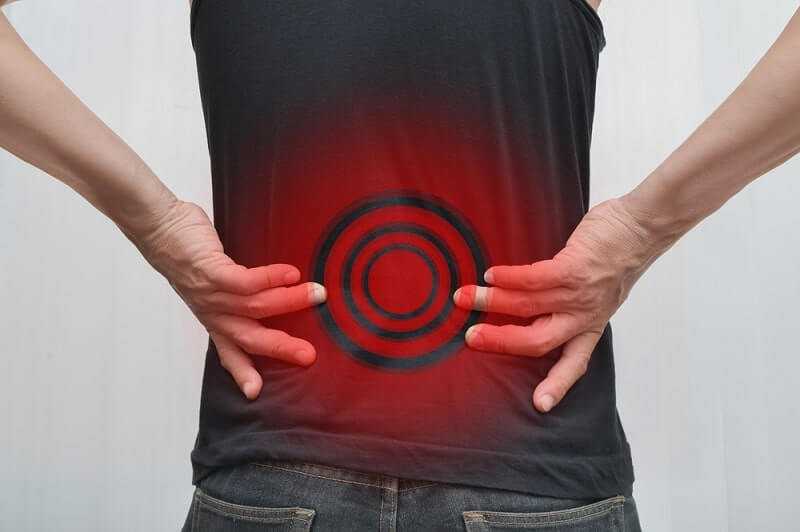When Is Back Pain Serious?

The person with chronic back pain has a dilemma. Though their chronic pain syndrome is their “signature medical problem” in their life, they can develop all the other usual diseases that anyone does as they age. So when is back pain serious?
The fact of the matter is that people with chronic pain are at greater risk of developing many other disorders.
This is due to the complicated interaction of chronic pain with the immune system, the endocrine system, the nervous system, and the psychological welfare of a human being. If a person is having pain continuously couldn’t it be difficult to determine when a real problem arises?
This post is going to focus on how a person can know when back pain is serious and how to discern what may be going on. Naturally, anyone deeply concerned with their pain syndrome should seek the help of a medical professional skilled in chronic pain management.

Note
My posts will always recommend a thorough medical evaluation before a chronic pain patient makes any adjustments in their pain management.
Let’s begin with 7 questions that a chronic pain patient should ask themselves when they are trying to decide when is back pain serious.
7 High Payoff Queries To Help Determine The Seriousness Of Back Pain
High payoff queries are vital questions to ask when something deep within a pain patient is alerting them that there has been a change for the worse in their condition. I do not recommend that anyone ignore the intuitive notion that there has been a change in their condition.
1) Has the character of the pain changed?
Chronic pain patients become accustomed to the character of their pain. The character of pain is defined as being “sharp” or “dull” or “burning” or “squeezing” or “heavy” etc.
They feel their pain every minute, of every hour, of every day. A day without pain is an unusual day. So when the character of the pain changes the chronic pain patient will detect the change.
The following changes in character are associated with several disorders:
- Back pain that is now shifted to the side and tends to fluctuate independent of position. This implies that an internal organ has become diseased (such as a kidney stone or a gallstone).
- Back pain that has changed to become fullness or pressure. This implies something expanding in the abdomen or pelvis (such as an aneurysm).
- Back pain that is a dull ache and perhaps in the mid-back. This implies the pancreas and can be associated with pancreatic cancer.
2) Has the intensity of the pain changed?
Chronic pain patients become accustomed with the individual variation of the intensity of their pain through-out the day. An increase in the intensity of pain must always be explained especially if the intensity continues to build and becomes unrelenting.
It is expected, based on how the human body works, that a chronic pain patient will gradually require more pain medication over the many months of treatment. This is based on the physiologic response called tolerance.
But, if the intensity of pain suddenly ramps up, that is not expected in the chronic pain patient. That implies another process is going on. That must be investigated.

3) Has the location of the pain changed?
Chronic back pain generally resides in the area of original degeneration of the back. This location does not vary too significantly from day to day. If a sudden change in location occurs (the pain that had been in the low back is suddenly in the mid-back between the shoulder blades – a presentation consistent with a Thoracic aneurysm) immediate evaluation must take place.
4) Are there new symptoms associated with the pain?
Chronic pain patients are also very aware of the daily associated symptoms of their syndrome. If their back pain is now associated with dizziness or loss of consciousness this implies a reduction of blood flow to the brain. This could occur if the blood pressure had gone down dramatically from internal bleeding.
Any change in mental function must be immediately evaluated. Until help arrives, the person should be laid on their back with their legs up (this allows extra blood to flow to the brain).

5) Has the amount of pain medicine needed for relief changed?
A sudden, extreme need for more pain medication must be explained. It is rare for chronic pain syndromes to worsen acutely without explanation. The assumption must be that a new disease process is occurring (in order that the patient be protected).
6) Has the person developed a “side effect” from their pain medicines?
Chronic pain patients become very tolerant of the side effects of their medications. Especially the side effects that can be felt such as dizziness, light-headedness, etc. If a chronic pain patient is suddenly dizzy on their usual dose of medicine, the inference is, there has been a change in physiology. That new feeling when taking their medicine must be explained.
7) Have the people around you asked, “Are you alright?”
Sometimes the change in the clinical condition of the chronic pain patient is better seen by an observer. The person them self is unaware that they look different. When reliable people consistently report a change in a loved one, an evaluation by a medical practitioner is in order.
The Response Should Be !
Chronic pain patients may be reluctant to add another doctor visit to their lifestyle. However, answering any of the previous 7 high payoff queries in the affirmative (in other words saying “yes” to any of the questions) changes the rules of engagement. The person must have urgent medical re-evaluation.
The best place to start is with your primary care provider or the emergency room (ER). A quick evaluation in the ER may not give a diagnosis but will be valuable to rule out life threatening emergencies. A negative workup in the ER is not a waste of time
Additional testing can be done as an outpatient by a Primary Care Practitioner after more acutely dangerous conditions have been ruled out. Never delay the evaluation of a clinical change in order to save money or not be inconvenienced.
Finally
I have reviewed 7 “High Payoff Queries” for determining when is back pain serious. I hope you have found the discussion interesting. Answering “yes” to any of the 7 questions requires an urgent re-evaluation of the patient’s back pain.
Whether that is done in a primary care provider’s office or in the emergency room depends on the severity of the symptoms and stability of the patient’s clinical status. When in doubt…go to the emergency room.
If you have further questions, please contact me. I would love to hear from you.





